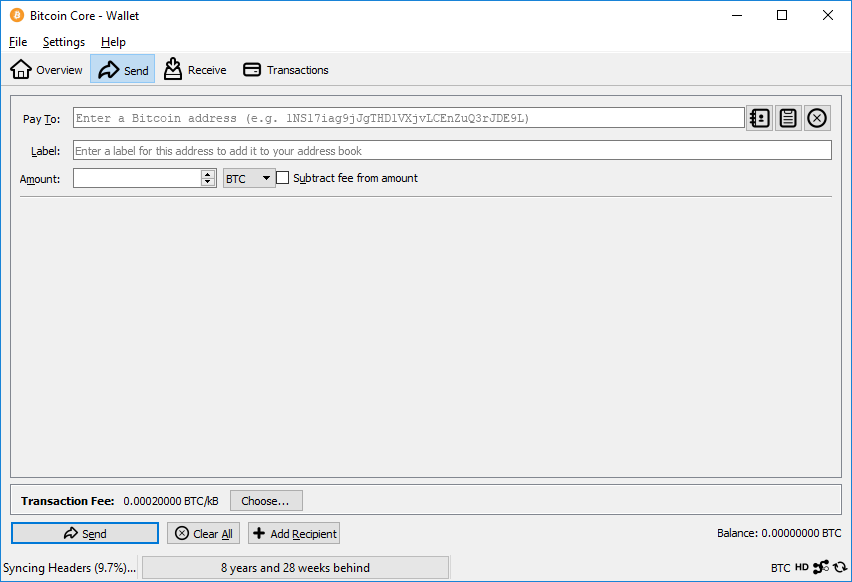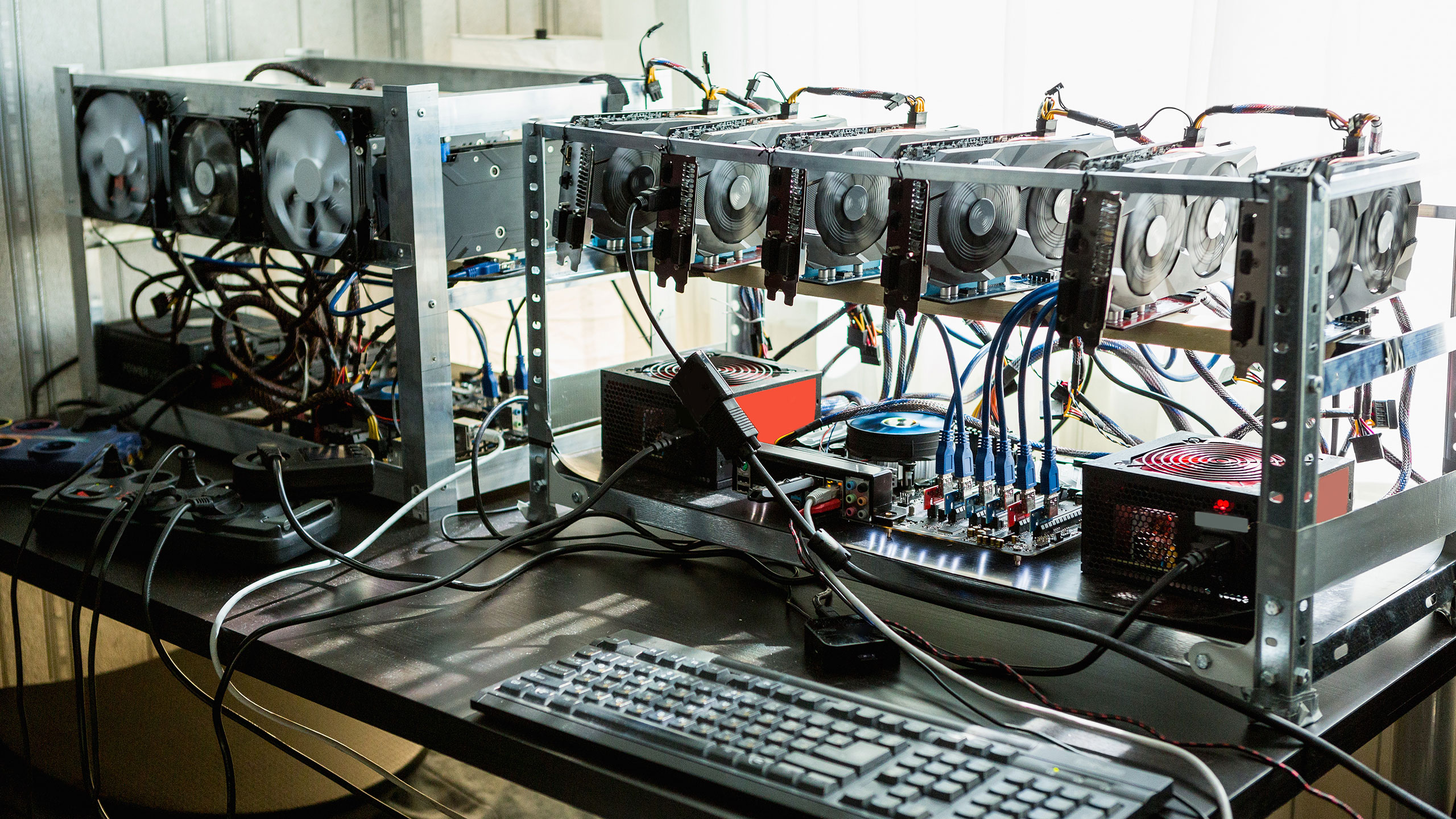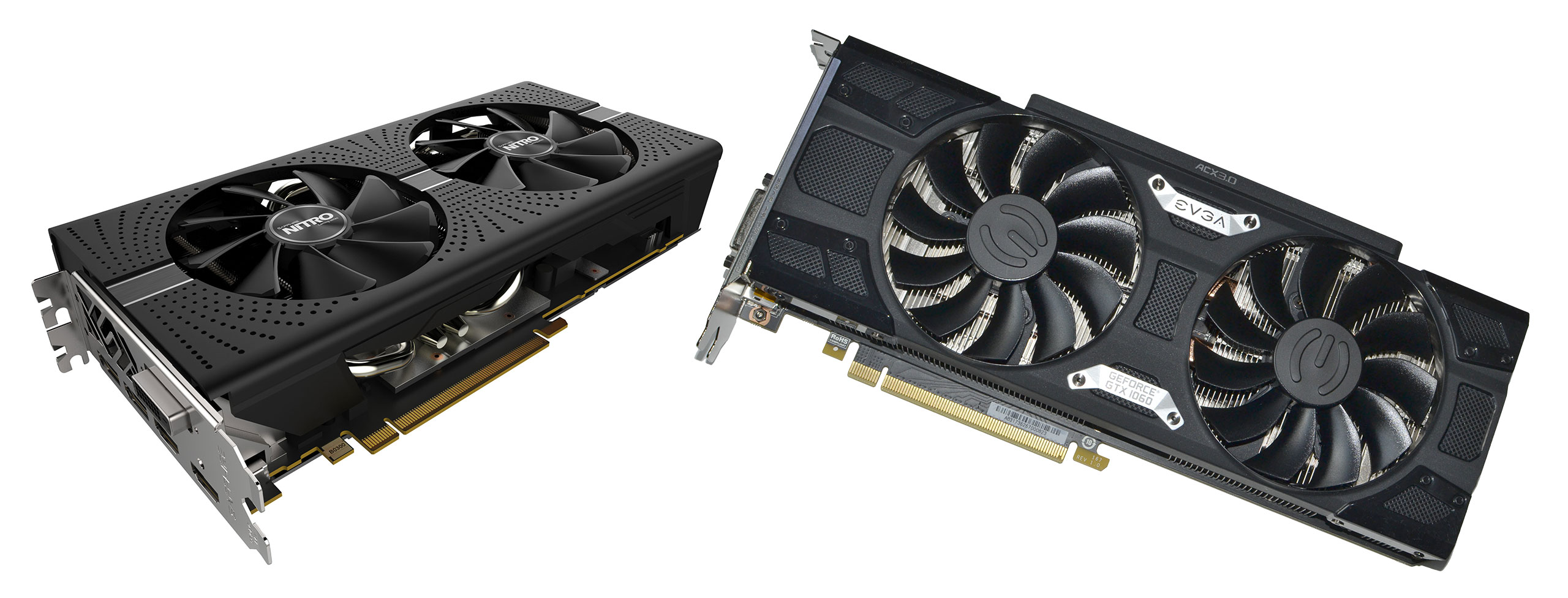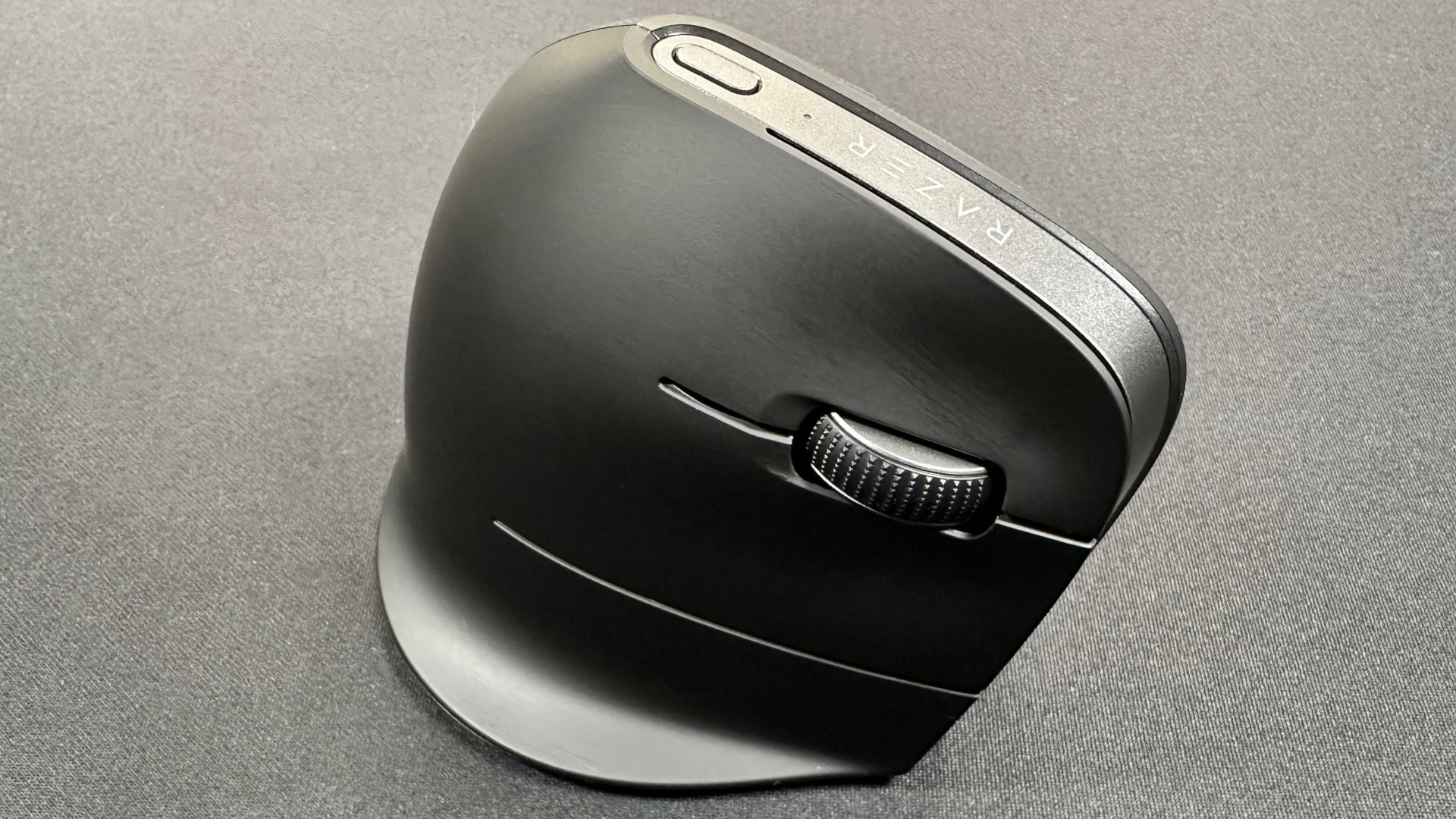What you need to know about cryptocurrency mining
Forget gaming for a moment, is there anything to this mining business?

If you want to know more about cryptocurrencies, where they came from, and why they're impacting graphics card prices, read How Bitcoin and cryptocurrencies are hurting gamers.
Cryptocurrency news has been hot of late, thanks in no small part to the skyrocketing prices of Bitcoin and Ethereum, the two largest cryptocurrencies right now. Litecoin and other cryptocurrencies are also up in value, and given the prices on graphics cards that are supposed to be useful for gaming, some of you will inevitably wonder: should I get into the mining business?
That's a big, open-ended question, and the answer depends on many factors. I'm not going to try and cover every aspect (because Google is your friend), but let's quickly go over the basics of what you would need to get started, and I'll include some rough estimates of how much money you might make when all is said and done.

Blockchains and the block reward
The core of mining is the idea of block rewards. For most coins, these are given to the person/group that finds a valid solution to the cryptographic hashing algorithm. This solution is a mathematical calculation that uses the results of previous block solutions, so there's no way to pre-calculate answers for a future block without knowing the solution to the previous block. This history of block solutions and transactions constitutes the blockchain, a sort of public ledger.
What is a block, though? A single block contains cryptographic signatures for the block and the transactions within the block. The transactions are collected from the network, typically with a small fee attached, which also becomes part of the block reward. There's a difficulty value attached to the solution for a block as well, which can scale up/down over time, the goal being to keep the rate of generation of new blocks relatively constant.
For Bitcoin, the target is to generate a block solution every 10 minutes on average. For Ethereum, block solutions should come every 16 seconds. That's obviously a huge difference in approach, and the shorter block time is one reason some people favor Ethereum (though there are others I won't get into). Simplistically, the number solution has to be less than some value, and with 256-bit numbers that gives a huge range of possibilities. The solution includes the wallet address for the solving system, which then receives all the transaction fees along with the block reward, and the block gets written to the blockchain of all participating systems.
Think of it as panning for gold in a stream—you might get lucky and find a huge gold nugget, you might end up with lots of flakes of dust, or you might find nothing. If the stream is in a good location, you make money more quickly. The difference is that with cryptocurrencies, the 'good location' aspect is replaced by 'good hardware.'

Setting up the software
There are many options for cryptocurrency mining. Some algorithms can still be run more or less 'effectively' on CPUs (eg, Cryptonight), others work best on GPUs (Ethereum, Zcash, Vertcoin), and still others are the domain of custom ASICs (Bitcoin, Litecoin). But besides having the hardware, there are other steps to take to get started with mining.
Keep up to date with the most important stories and the best deals, as picked by the PC Gamer team.
In the early days of Bitcoin and some other cryptocurrencies, you could effectively solo-mine the algorithms. That meant downloading (or even compiling) the wallet for a particular coin and the correct mining software. Then you'd configure the mining software to join the cryptocurrency network of your choosing, and dedicate your CPU/GPU/ASIC to the task of running calculations. The hope was to find a valid block solution before anyone else. Each time a block is found, the calculations restart, so having hardware that can search potential solutions more quickly is beneficial.
These days, a lot of people forego running the wallet software. It takes up disk space, network bandwidth, and isn't even required for mining. Just downloading the full Bitcoin blockchain currently requires around 145GB of disk space, so it can take a long time to get synced up. There are websites that take care of that part of things, assuming you trust the host.
In theory, over time the law of averages comes into play. If you provide one percent of the total computational power for a coin, you should typically find one percent of all blocks. But as Bitcoin and its descendants increased in popularity, difficulty shot up, and eventually solo-mining became an impractical endeavor. When you're only able to provide 0.00001 percent of the mining power, and that value keeps decreasing over time, your chance of finding a valid block solution becomes effectively zero. Enter the mining pools.

Join our mining guild!
Solo mining is like solo gaming in an MMO, where eventually you can't progress any further on your own. For cryptocurrencies, block rewards have become the domain of large mining guilds, called mining pools. To help secure the blockchain, you don't want any single group—a mining pool or an individual—to control more than 50 percent of the computational power (hashrate) for the coin network, but for mining purposes, being in a bigger pool is almost always better.
The reason is that, unlike block rewards where everything goes to the winning system, mining pools work together and distribute the rewards among all participants, usually based on a percentage of the mining pool hashrate. Your hardware gets small pieces of work from the pool and submits those as shares. Even if you only contribute 0.00001 percent of the hashrate, you still get that percentage of every block reward that the pool receives.
To give a specific example, at present Bitcoin has a total network hashrate of approximately 13 EHash/s (exa-hash), but a good Bitcoin ASIC like the Antminer S9 will only provide about 13THash/s. If hashrate were to stay constant, your chance of mining a block solo is one in a million, meaning it you would find on average one block every 19 years. The problem is that even five years ago, the hashrate was one millionth of what it is now, meaning you'd have better luck winning the lottery.
Take that same 13TH/s and join a pool that does 25 percent of the network hashrate. The pool should find 25 percent of blocks, and you'll end up with 0.0004 percent of the block rewards. With a block worth 12.5 Bitcoins (BTC), that's 0.00005 coins from each block the pool finds, and it should find about 36
blocks per day. That's 0.0018 BTC per day, which might not sound like much, but at $17,000 per BTC that adds up to over $30 per day. (Don't get too excited, though, as the Antminer S9 currently sells for over $5,000.)
There are many places that will provide calculators for cryptocurrencies, so you can see how much you could potentially earn from mining. But ultimately, you'll want to join a mining pool. As a side note, I'd recommend using a new email address for such purposes, and then I'd create a unique password for every pool you happen to join—because cryptocurrency thefts are far too common if you're lax with passwords. #experience
If you want to actually collect a coin, like Ethereum, you'll need to take the additional steps of downloading the Ethereum client, syncing up to the blockchain, and setting up the mining pool to pay out to your wallet. It's possible to have pools deposit directly to a wallet address at a cryptocurrency exchange, but again, there are risks there and long-term I wouldn't recommend storing things on someone else's servers/drives. The recent Nicehash hack provides a good lesson in why this is a bad idea.
If all this sounds time consuming, it can be—and the people who are really into cryptocurrency often do this as a full-time job. And the real money often ends up in the hands of the pool operators and exchanges, but I digress.

Doing the actual mining
You've got your hardware, you've joined a mining pool, and you're ready to rock the cryptocurrency world. All that's needed now is to download the appropriate software, give it the correct settings for your hardware and the pool, and then away you go. Sort of.
Most pools will provide basic instructions on how to get set up for mining, including where to download the software. But all software isn't created equal, and even things like drivers, firmware revisions, and memory clockspeeds can affect your mining speed. So if you're serious about mining, get friendly with scouring places like Bitcointalk, Github, and other forums.
The easiest way to mine a coin is to just point all your mining rigs at the appropriate pool and load up the necessary software. The problem is that the 'best' coin for mining is often a fleeting, ethereal thing—Ethereum's massive jump in value came because other market forces pushed it from $5-$10 per ETH up to $600+ per ETH during 2017. Prior to that, it was only one of many coins that were potentially profitable to mine. But switching between coins can take a lot of time, so there's other software that will help offload some of that complexity.
One popular solution is (was?) Nicehash, which leases hashing power to others that will pay for it in Bitcoin. As Nicehash is currently working to relaunch following a hack, other alternatives include WinMiner and Kryptex, though I can't vouch for either service. Basically, these places transfer the job of figuring out which coin/algorithm to mine to others, though there are fees involved and the going rates are lower than mining coins directly. The benefit is that you don't end up holding a bunch of some coin that has become worthless.
A more complex solution is to set up multi-algorithm mining software on your own. To do this, you would typically have accounts for all the coins you're interested in mining, and then create rules to determine which coin is best at any given time. Sites like WhatToMine can help figure out what the currently best paying option is, but naturally others would be seeing the same data.

Bottom line—what's it cost and what can you gain?
The thing you need to know with cryptocurrency mining is that beyond the initial cost of the hardware, power and hardware longevity are ongoing concerns. The lower your power costs, the easier it is to make mining a profitable endeavor. Conversely, if you live in an area with relatively expensive power costs, mining can seem like a terrible idea.
When many people think about cryptocurrency mining, the first thought is to look at Bitcoin itself. Now the domain of custom ASICs (Application Specific Integrated Circuits), Bitcoin isn't worth mining using GPUs. Where a fast CPU can do perhaps 40MH/s and a good GPU might even hit 1GH/s or more, the fastest ASICs like the Antminer S9 can do 14TH/s. But the Antminer S9 costs $5,000 or more, and still uses around 1350W of power (so you need to add your own 1500W PSU).
Can you do better with mining using graphics cards? There are many variables, and the market is extremely volatile, but as you might have guessed given the current prices of many GPUs, the answer is a resounding... maybe. Let's start with a basic system cost. You'll need a cheap CPU, motherboard with six PCIe slots, 8GB DDR4 RAM, budget hard drive, six PCIe riser adapters, and 1350W 80 Plus Platinum PSU. For the case, you're usually best off building a mining rig using wire shelving and zip ties or something similar. Add all of that up and it will cost around $700 (with 8GB RAM).
Now you just need to add six graphics cards. Here's what things currently look like with the current market prices listed. I've included three popular ASICs as well as a point of reference:

Is there still money to be made as a cryptocurrency miner? I think a lot of this goes back to what happened with Ethereum and Bitcoin this year, with the value going from under $10 per ETH to a peak of over $720 per ETH, and Bitcoin going from under $1,000 to over $17,000. Selling all the coins you mine can earn money, but if you had the foresight to mine and hold either BTC or ETH from the start of the year, you literally just hit the jackpot. Or if you prefer mining slang, you hit the motherlode.
After a lull in the $250-$300 range, ETH is now at over $700, while BTC is at $16,800 at the time of writing. If you had asked me two months ago if I thought we'd be hitting five digits for Bitcoin this year, I would have laughed—$5,000 already seemed too high. Now I'm not sure where it will end, but I definitely wouldn't want to get caught holding the bag if the bubble pops and the price plummets.
There's this hope among cryptocurrency advocates that this is only the beginning, and prices could reach thousands of dollars per ETH and potentially millions per BTC. Sound like fantasy land? I wish I had the foresight to just hold onto a few hundred BTC and ETH from years past. Even my advice earlier this year now rings hollow: if you started mining with $10,000 worth of PC hardware in June, you might have a couple BTC or 30+ ETH by now. Or you could have just purchased a few BTC, and they would now be worth over five times as much.
Basically, price volatility combined with increasing difficulty can radically change things over the span of months. There has been a huge spike in cryptocurrency prices during the past several months, but it could have gone the other way. So if you do decide to get into mining, don't wager more than you can afford to lose.
Jarred's love of computers dates back to the dark ages when his dad brought home a DOS 2.3 PC and he left his C-64 behind. He eventually built his first custom PC in 1990 with a 286 12MHz, only to discover it was already woefully outdated when Wing Commander was released a few months later. He holds a BS in Computer Science from Brigham Young University and has been working as a tech journalist since 2004, writing for AnandTech, Maximum PC, and PC Gamer. From the first S3 Virge '3D decelerators' to today's GPUs, Jarred keeps up with all the latest graphics trends and is the one to ask about game performance.


